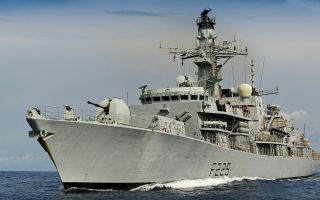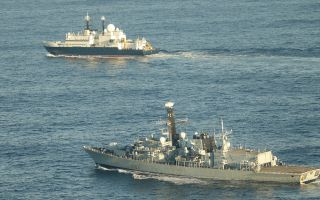
Defence Command Paper 2023 'you will see it next week', says Sunak

A Defence Command Paper setting out plans to improve the killing ability and agility of the Armed Forces is expected to be published next week.
The Prime Minister confirmed that the proposals for reform of the military will be published before MPs break for their summer recess on July 20.
There has been speculation that the paper will announce a reduction to the size of the British Army while incorporating lessons learnt from the war in Ukraine, with a potential boost for research into drone technology.
According to Downing Street, the command paper will lay out the measures the UK is taking to improve the "lethality and deployability of our own Armed Forces".
The paper will include plans to establish a new Global Response Force which defence chiefs hope will dramatically increase the ability to physically respond to crises at short notice, either by being already present or deploying more rapidly.
Mr Sunak, asked on the plane journey to the Nato summit in Vilnius when the command paper would be published, said: "I think (it will be published) before summer recess, so you will see it next week."
He added: "I don't want to pre-empt it but when it comes to the deployability of troops, what we have moved over time to doing, and you'll see that in the command paper, is increasing the agility of our Armed Forces so that they are more easily deployable and more flexible.
"Again, without pre-empting too much that is in there, that is not a knee-jerk change.
"That has been an evolution in how we organise the Armed Forces, that flexibility and agility of response.
"Any deployability is something that is continually happening but you'll see a little bit of that next week."
The Prime Minister said part of the new blueprint would include "zig-zagging", a concept that should allow members of the Armed Forces more flexibility in where they work.
The Conservative Party leader said the move had the potential to benefit public service and also make for more "fulfilling" careers in the Armed Forces.
Mr Sunak told reporters: "We're very lucky in the Armed Forces, we've got people with extraordinary experience.
"I think it is important that we benefit from that more broadly as well, so what we are doing is making it easier for people to move from the services into the civil service and into government so we can then benefit from their expertise because that set of skills is equally valuable to the country and government.
"But then also, again for those skills to be retained long-term, to make it easier for them to go back to the Armed Forces as well at a time that they want to.
"Because what I don't want is that we spend all this time investing in people, training them, being very fortunate to have them and then not hanging on to them.
"So we want to make it easier to do that, so we're going to make it easier for them to move into government and the civil service, and then back again."
"But also among all the different services, so we take a tri-service approach so they can more easily move among the services."
Mr Sunak went on: "A great example is Army medics moving into the NHS or nuclear engineers who might want to move not just between the Navy but elsewhere and come back.
"So I think that will be good for the Armed Forces, good for the country but also be good for those individuals who will have a richer career and actually more fulfilling and more likely to stay."








